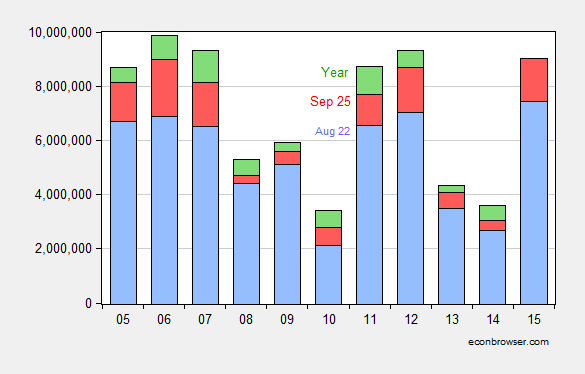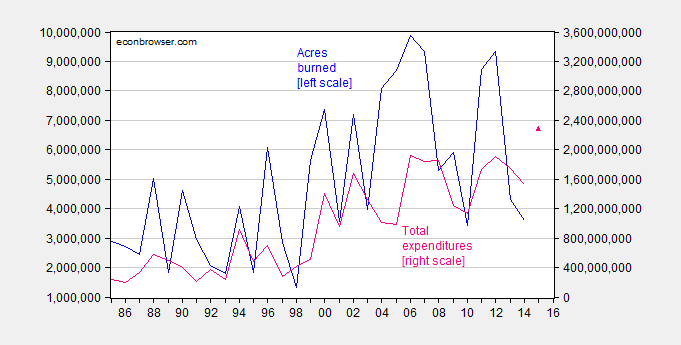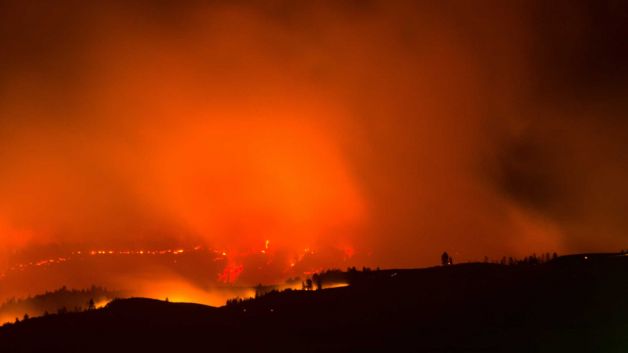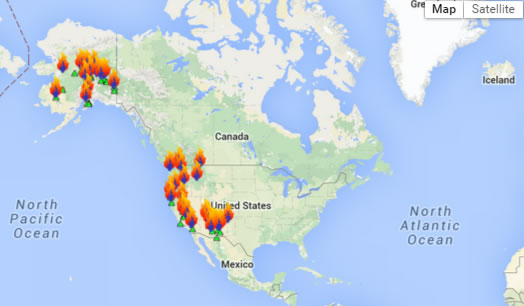Industrial production is down. Wisconsin nonfarm payroll employment is down. Global Temperatures hit records in 2014, 2015.
Category Archives: environment
Guest Contribution: “The Paris Agreement on Climate Change, C’est Bon”
Today we are fortunate to have a guest contribution written by Jeffrey Frankel, Harpel Professor of Capital Formation and Growth at Harvard University, and former Member of the Council of Economic Advisers, 1997-99. An earlier version was published by Project Syndicate.
Continue reading
Satellite Data on Temperatures
Why one shouldn’t obsess on just one data set. Read on only if you don’t believe in a conspiracy so vast…
A Year for Records: Temperatures, Acres Burned
Read on, only if you believe in considering data.
Record Year-to-Date Acres Burned
Acres burned already exceeds the comparable figure for 2006, the previous record year.

Figure 1: Acres burned to August 22 (blue bar), from August 22 to September 25 (red bar) and to year-end (green bar). Source: NIFC1, NFIC2, author’s calculations.
Using the same regression (log acres on log acres ytd) used in this post, my estimate of acres burned has risen from 9.62 million to 9.76 million.
This in turn raises the estimated total expenditures from $2.27 billion to $2.29 billion.
Figure 2: Acres burned (blue, left scale) and total Federal firefighting expenditure in dollars (pink, right scale) predicted 2015 (pink triangle). Source: NIFC1, NFIC2, and author’s calculations.
I’ve only tabulated direct Federal fiscal costs; here is an article on part of the human toll. Further note that these costs do not include state level costs. Cal Fire’s total budget for the current fiscal year is about $390 million.[1]
Katrina Plus Ten
Let hope our responses to the next ones are better than “Heckuva job, Brownie”.
Projecting 2015 Acres Burned and Firefighting Expenditures
Blue Creek fire, close to Walla Walla, WA. Photo: Greg Lehman, AP. Source: Seattle Post-Intelligencer.
Reader CoRev asserts wildfire intensity has not been severe of late. I’ll just graph some data to bring reality to the interested.
Remember: “Global warming is a total, and very expensive, hoax!”
So said Republican Presidential candidate Donald Trump. Pay no heed to the massive wildfires. And temperature readings.
Here is a map of current fires in the US (see here for Canada):
Source: NOAA.
Guest Contribution: “Gas Taxes and Oil Subsidies: Time for Reform”
Today we are fortunate to have a guest contribution written by Jeffrey Frankel, Harpel Professor of Capital Formation and Growth at Harvard University, and former Member of the Council of Economic Advisers, 1997-99. A shorter version was published at Project Syndicate.
NOAA: “No Slowdown in Global Warming”
From NOAA:
“Adding in the last two years of global surface temperature data and other improvements in the quality of the observed record provide evidence that contradict the notion of a hiatus in recent global warming trends,” said Thomas R. Karl, L.H.D., Director, NOAA’s National Centers for Environmental Information. “Our new analysis suggests that the apparent hiatus may have been largely the result of limitations in past datasets, and that the rate of warming over the first 15 years of this century has, in fact, been as fast or faster than that seen over the last half of the 20th century.”


